How
wine is made
An illustrated guide to the winemaking process, by Jamie Goode
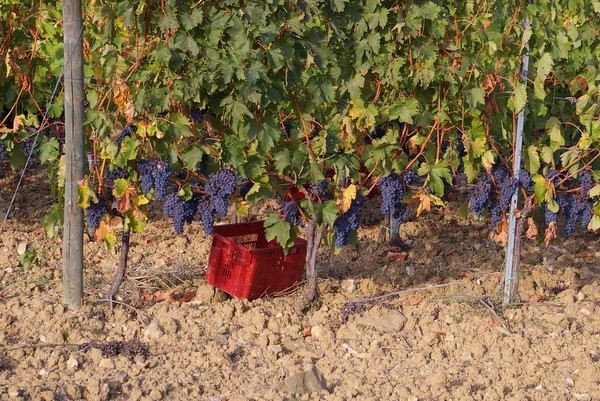
It all starts with grapes on the vine: and it's
important that these are properly ripe. Not ripe enough, or too
ripe, and the wine will suffer. The grapes as they are harvested
contain the potential of the wine: you can make a bad wine from good
grapes, but not a good wine from bad grapes.
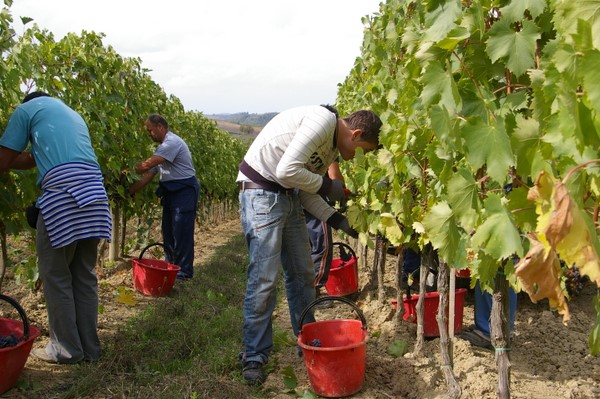
Teams of pickers head into the vineyard. This
is the exciting time of year, and all winegrowers hope for good
weather conditions during harvest. Bad weather can ruin things
completely.
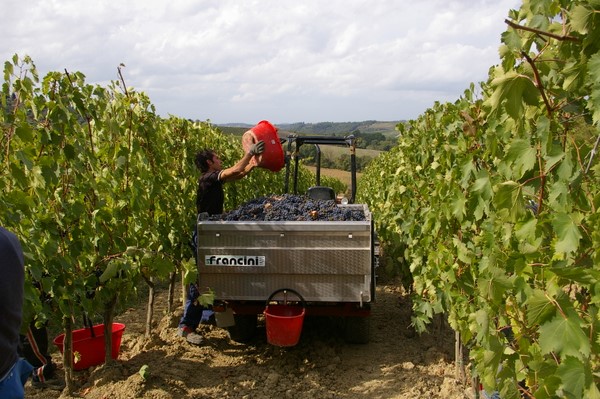
Hand-picked grapes being loaded into a half-ton
bin.
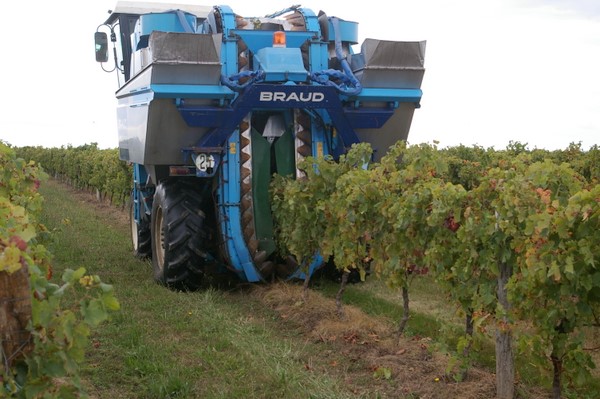
Increasingly, grapes are being machine
harvested. This is more cost-effective, and in warm regions quality
can be preserved by picking at night, when it is cooler. This is
much easier to do by machine.
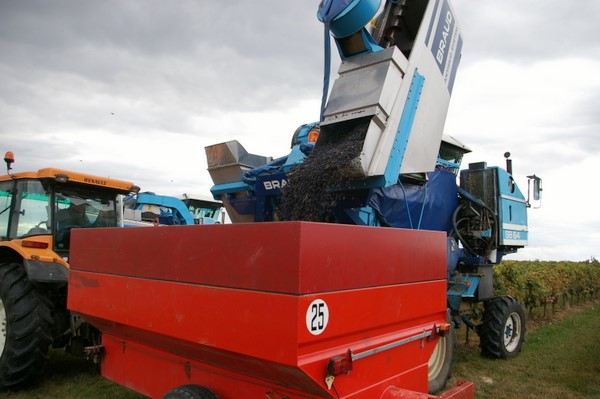
The harvester plucks the grape berries off the
vine and then dumps them into bins to go to the winery. This is in
Bordeaux.
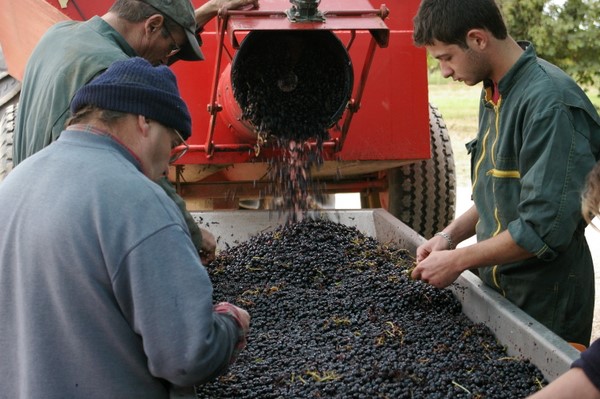
These are machine-picked grapes being sorted
for quality.
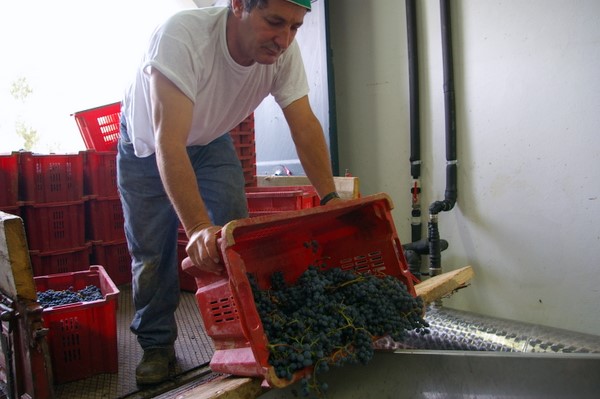
Hand-picked grapes arriving as whole bunches in
the winery.
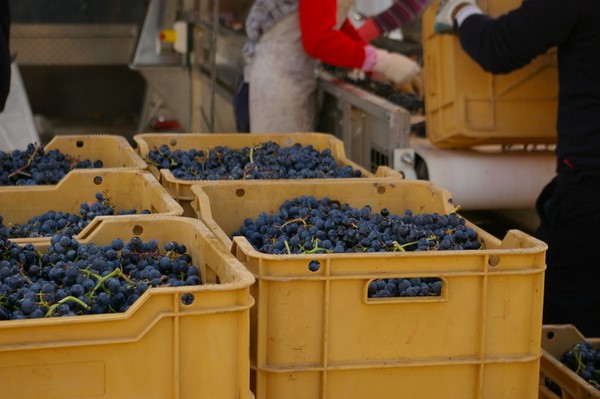
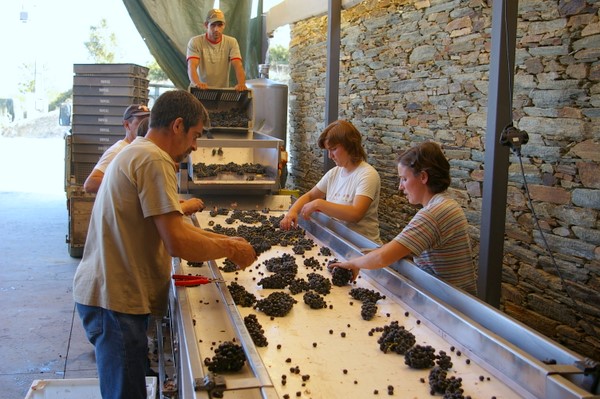
Sorting hand-picked grapes for quality. Any
rotten or raisined grapes, along with leaves and petioles, are removed.
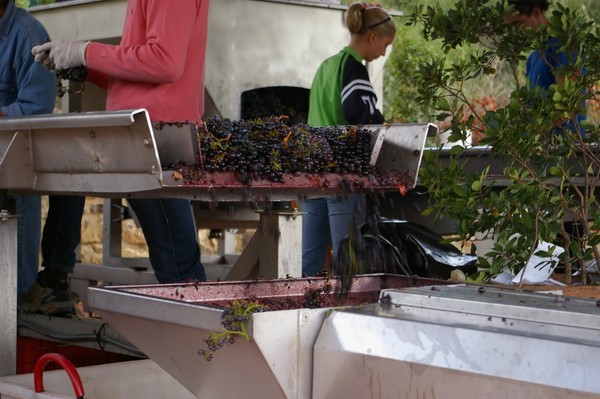
These sorted grapes go to a machine that
removes the stems. They may also be crushed, either just a little,
or completely.
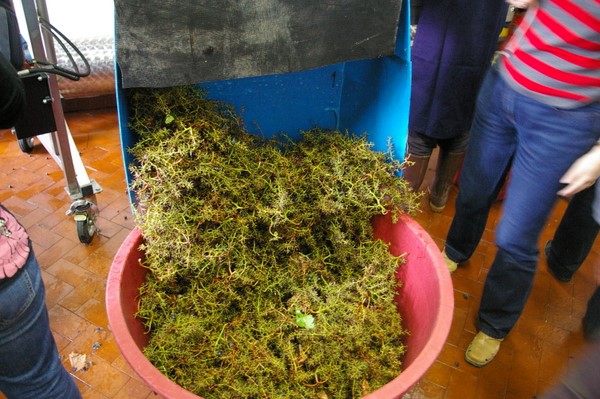
These are the stems that the grapes have been
separated from in the destemmer.
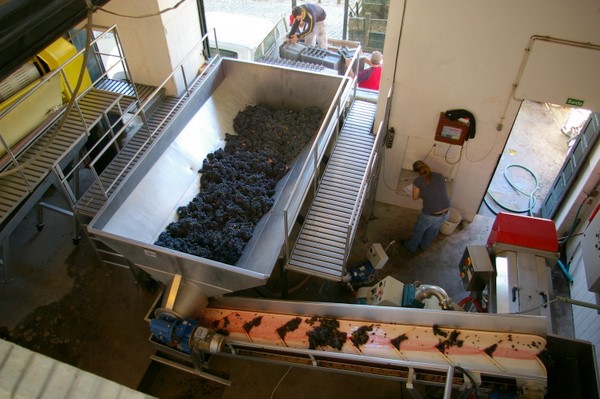
Reception area at a small winery. Here grapes
are being loaded and then taken by conveyor belt
to a tank, from where they are being pumped into the fermentation
vessel.
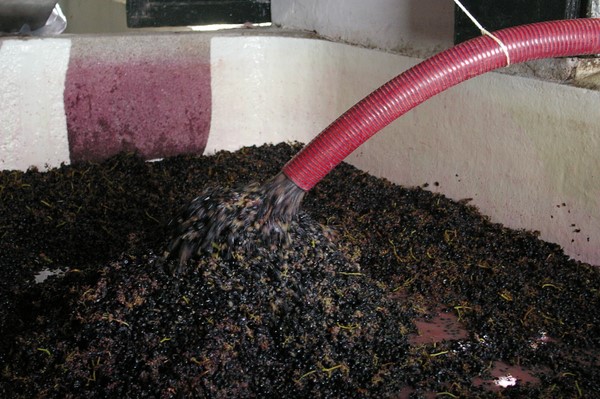
This is where red wine making differs from
whites. Red wines are fermented on their skins, while white wines
are pressed, separating juice from skins, before fermentation. This
fermentation vessel - a shallow stone lagar in Portugal's Douro
region - will be filled up and then the grapes will be foot trodden,
so that the juice can extract colour and other components from the
skins.
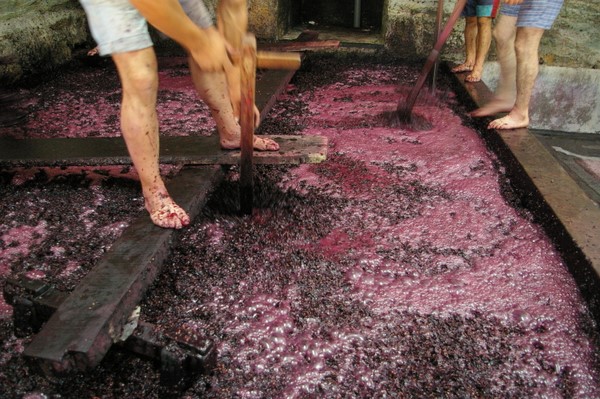
This is a very
traditional winery, again, in the Douro. The red grapes have been
foottrodden, and fermentation has begun naturally. These men are
mixing up the skins and juice by hand: this process is carried out
many times a day to help with extraction, and also to stop bacteria
from growing on the cap of grape skins that naturally would float to
the surface.
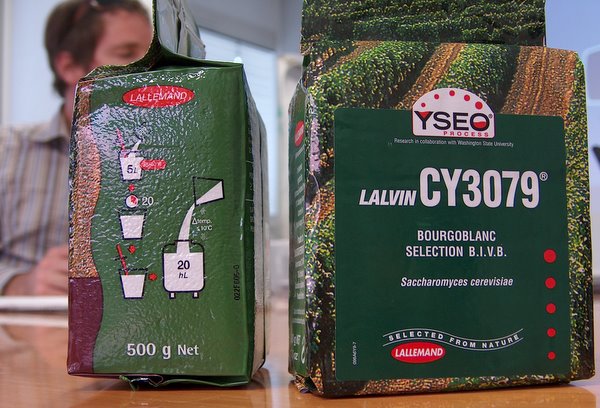
Sometimes
cultured yeasts are added in dried form, to give the winemaker more
control over the fermentation process. But many fermentations are
still carried out with wild yeasts, naturally present in the
vineyard or winery.
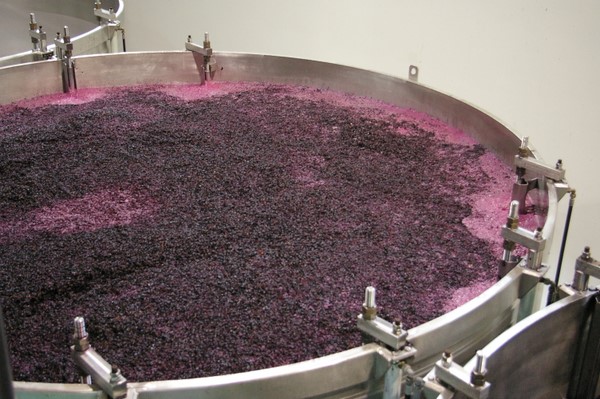
These red grapes
are being fermented in a stainless steel tank. During fermentation,
carbon dioxide is released so it is OK to leave the surface exposed.
Sometimes, however, fermentation takes place in closed tanks with a
vent to let the carbon dioxide escape.
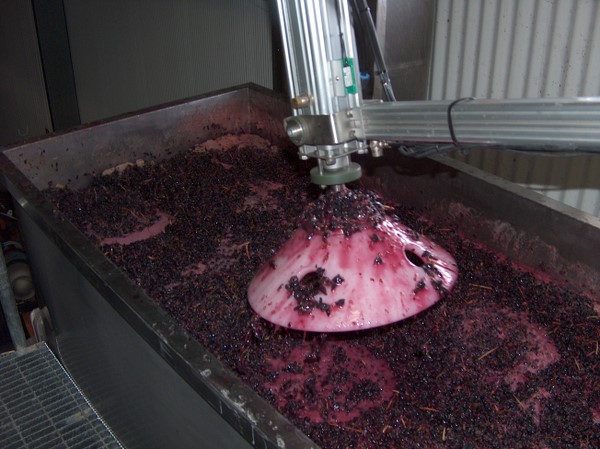
In this small
tank the cap of skins is being punched down using a robotic cap
plunger. In some wineries this is done by hand, using poles.
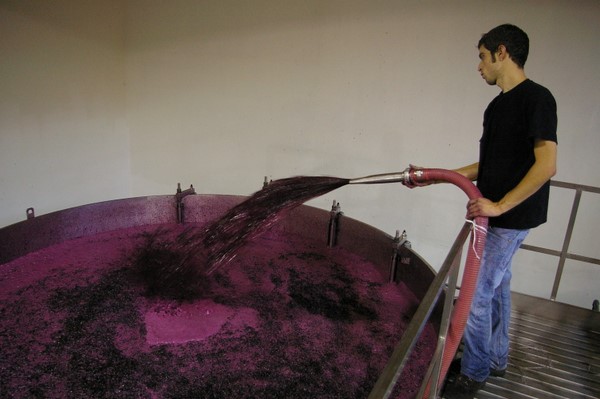
An alternative to
punch downs is to pump wine from the bottom of the tank back over
the skins.
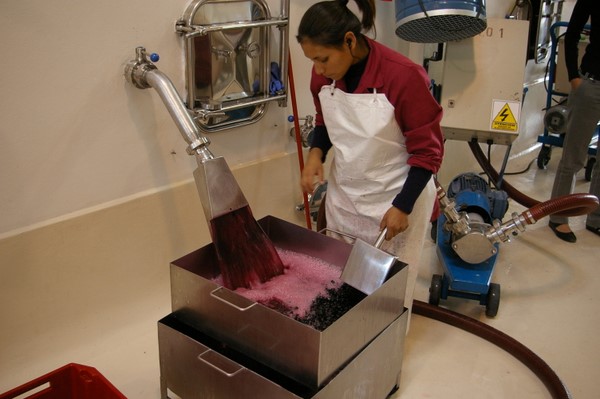
Here, fermenting
red wine is being pumped out of the tank, and then pumped back in
again. The idea is to introduce oxygen in the wine to help the
yeasts in their growth. At other stages in winemaking care is taken
to protect wine from oxygen, but at this stage it's needed.
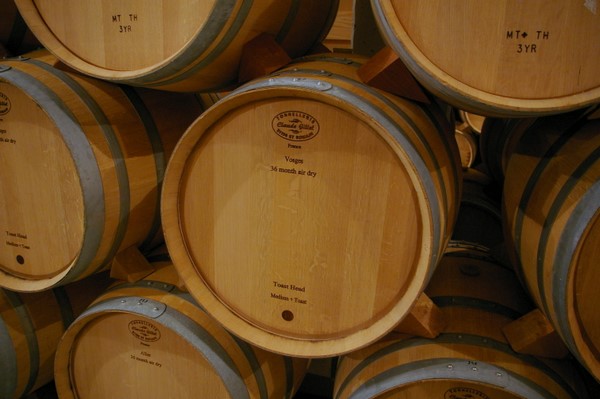
Once fermentation
has finished, most red wines are then moved to barrels to complete
their maturation. Barrels come in all shapes and sizes. Above is the
most common size: 225-250 litres. The source of the oak, and whether
or not the barrel has been used previously, is important in the
effect it has on the developing wine.
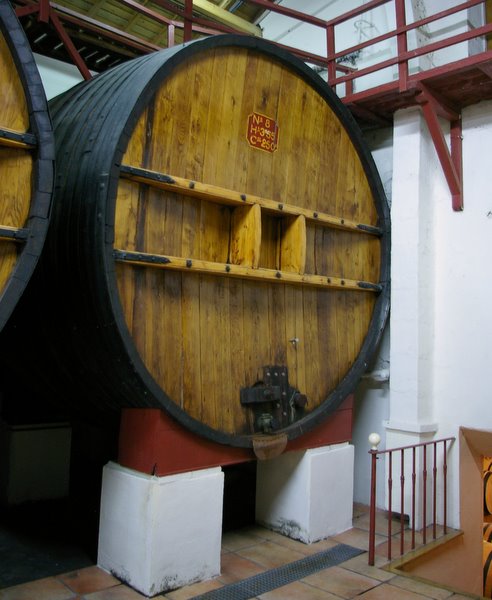
This is a much
larger, older barrel, imparting virtually no oak character to the
wine. This suits some wine styles better than smaller barrels.
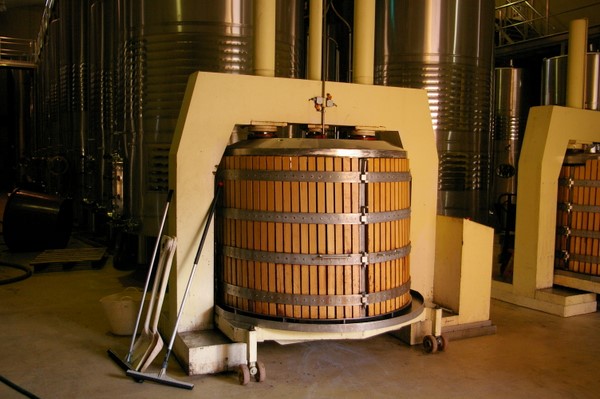
This is a basket
press: once fermentation has completed and the young wine has been
drained off the skins, the remaining skins and stems are pressed to
extract the last of the wine that they contain.
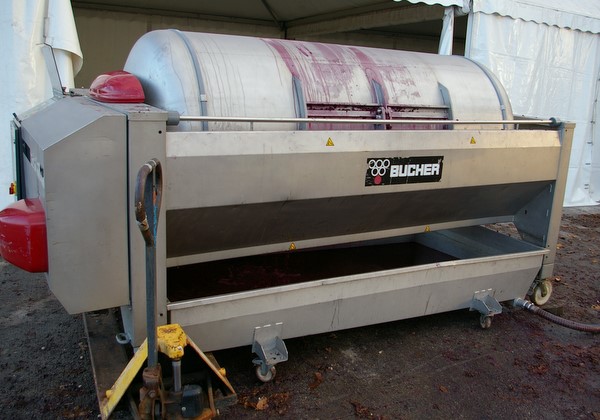
This is a bladder
press, used for some reds and almost all whites. A large bladder
fills with air, pressing the contents gently and evenly, with
gradually increasing pressure.
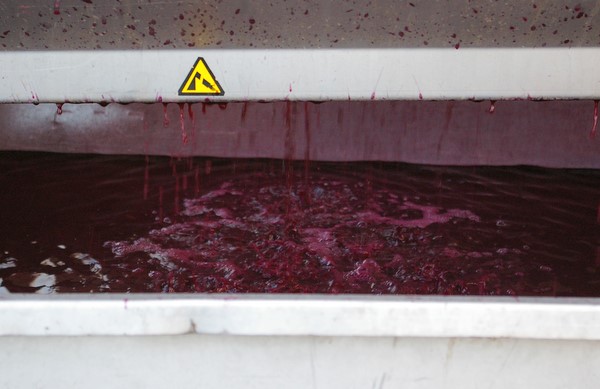
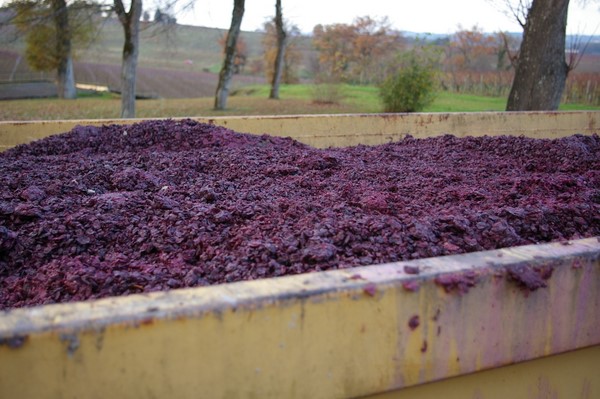
And this is what
is left at the end - the marc. It can be used to make compost.
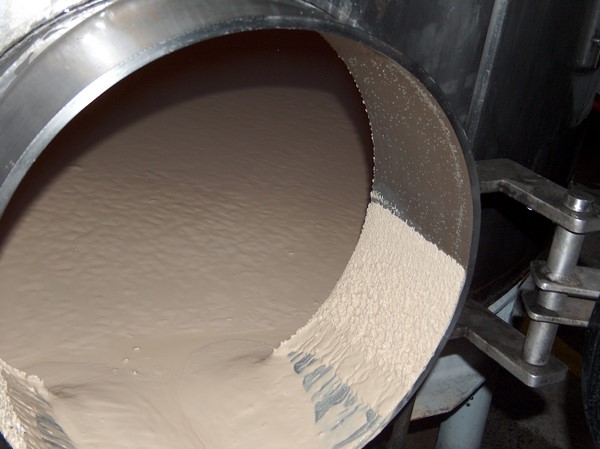
The inside of a
tank that has been used to ferment white wine: the residue consists
of dead yeasts cells.
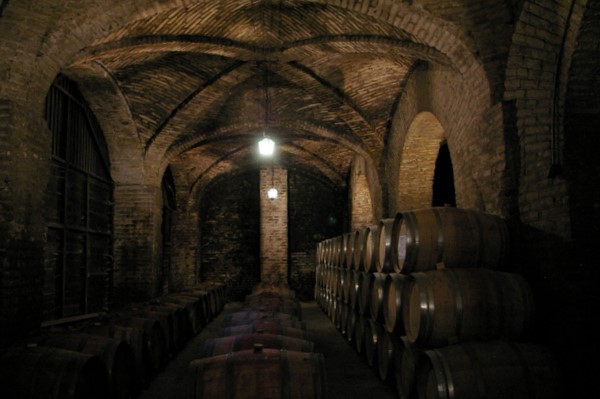
Barrel halls can
still look quite traditional. Cool underground cellars are perfect
for maturing wines - a process that takes anything from six months
to three years.
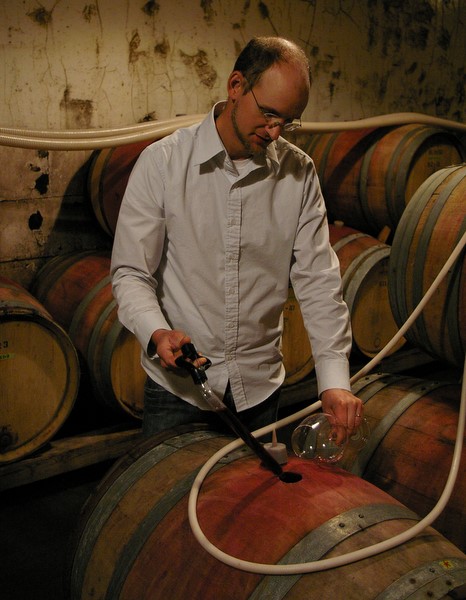
Winemakers
typically check the maturing red wine barrels at regular intervals,
and top them up as some of the wine evaporates during the maturation
process.
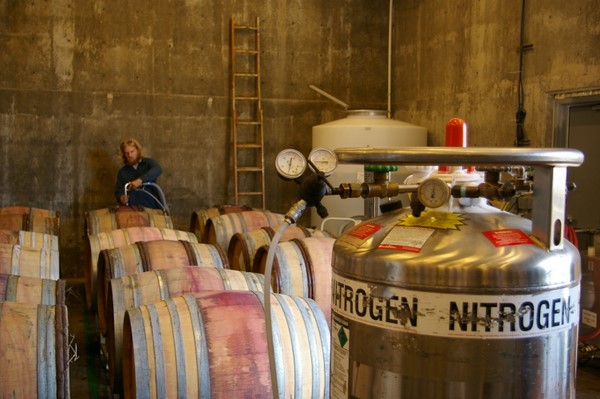
Occasionally it
is necessary to move wine from one barrel to another, or from barrel
to stainless steel tank. This cellar hand is using nitrogen gas to
move the wine without exposing it to large amounts of oxygen.
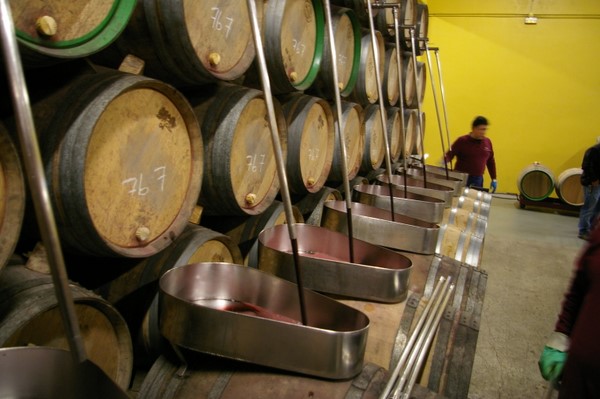
Here wine is
being moved from one barrel to another deliberately exposing it to
oxygen to aid in the maturation process.
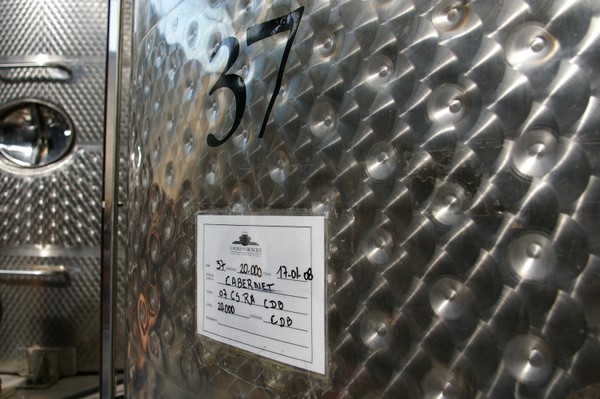
Some wines see no
oak at all, but are kept in stainless steel tanks to preserve the
fresh fruity characteristics.
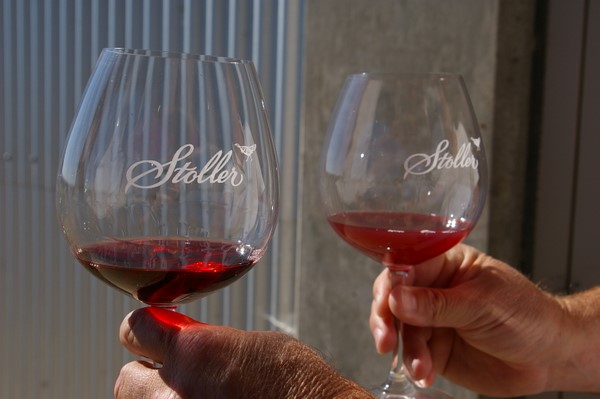
Finally, the wine
is ready and is prepared for bottling. Often, filtration is used to
make the wine bright and clear, and to remove any risk of microbial
spoilage. The glass on the left has been filtered; on the right you
can see what it was like just before the process.
See
also:
 How
cork is made: an illustrated guide How
cork is made: an illustrated guide
Published
08/11
Back
to top
|

